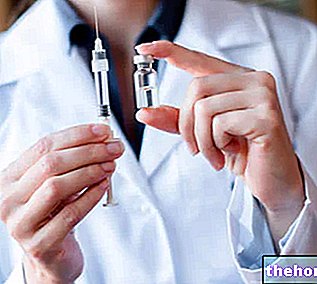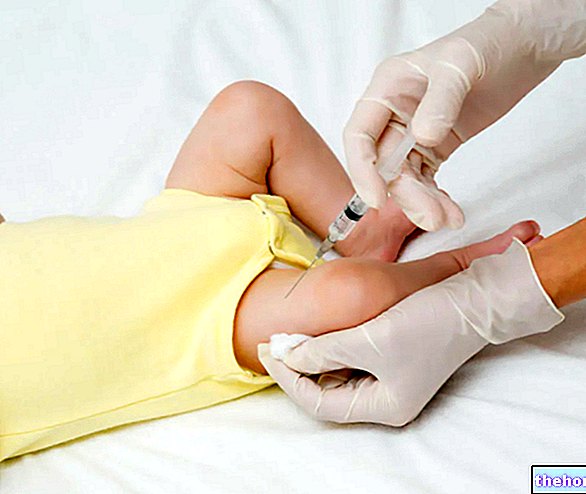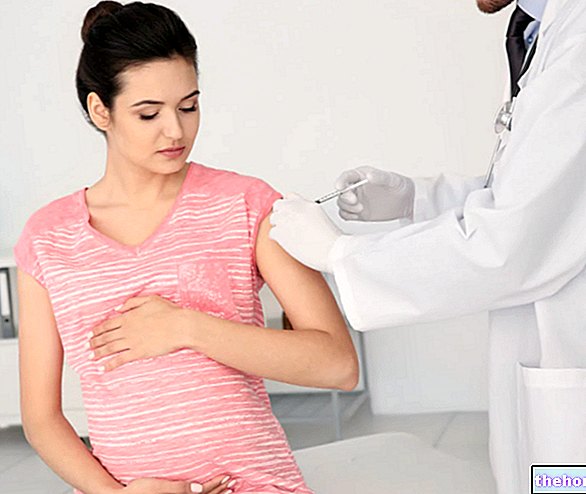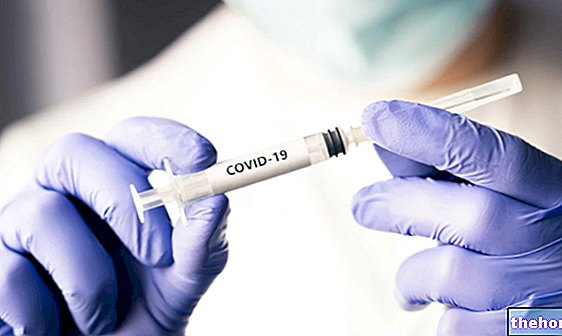
The MMR vaccine is mainly for pediatric use; however, it can also be used among adults, if they are not vaccinated and have not yet contracted one of the aforementioned infections.
Belonging to the mandatory vaccines of the pediatric age, the MMR vaccine provides for administration by injection, divided into two dosages; in children, these two dosages are dated to the 14th month, the first, and to 5-6 years, the second; in adults, instead, they are usually closer together (a time span of 4 weeks between one dose and the next is sufficient).
An example of a live attenuated vaccine, the MMR vaccine is a drug with reduced adverse effects (the most common are minor clinical disturbances) and effective.
Currently, vaccination against measles, mumps and rubella is subject to the vaccination requirement established in 2017; consequently, the MMR vaccine is mandatory.
When combined with the varicella vaccine, the MMR vaccine represents the alternative to the MPRV vaccine (N.B: the MMRV vaccine is the tetravalent vaccine against measles, mumps, rubella and varicella).
Measles, Mumps and Rubella
Measles, mumps and rubella are three contagious infectious diseases of viral origin (ie caused by viruses).
Before the advent of mass vaccinations against them, measles, mumps and rubella represented three typical childhood infections.
Currently, there is still no specific therapy for measles, mumps and rubella: those who fall ill, therefore, must wait for the spontaneous resolution of the infection (which usually occurs within 10-14 days).
Measles
Measles is due to a single-stranded RNA virus belonging to the genus Morbillivirus and to the family of Paramyxovirus.
The transmission of measles occurs mainly by direct contact, through saliva and volatile droplets emitted with coughing, sneezing or when speaking; however, transmission by indirect contact is also possible, ie by touching objects contaminated by the infectious agent.
Measles usually starts with a runny nose, sneezing, fever, general malaise, loss of appetite, cough, and fatigue; after which, 3-4 days after the onset of the first symptoms, it causes characteristic brownish-red spots, slightly raised, all over the body.
Measles tends to have a positive outcome; however, in some unfortunate circumstances, it can happen that it degenerates and gives rise to complications, such as: acute diarrhea, otitis media, conjunctivitis, pneumonia, epilepsy, strabismus, encephalitis, meningitis and / or optic neuritis.
Prior to the mass vaccination against him, measles predominantly affected individuals between the ages of 1 and 5.
Measles is on the list of exanthematous diseases.
Mumps
Commonly known as mumps, mumps is due to a single-stranded RNA virus belonging to the genus Rubulavirus and to the family of Paramyxovirus.
Mumps is mainly transmitted by direct contact, through saliva and the volatile droplets emitted when coughing, sneezing or when talking; however, it is also possible to transmit it by indirect contact, that is by touching objects contaminated by the infectious agent.
Mumps is characterized by the inflammation of two important salivary glands: the parotid glands.
Generally, the individual who contracts mumps complains of pain near the ears (exacerbated by chewing and swallowing), fever, malaise, headache and widespread muscle aches.
As a rule, mumps resolves positively; however, in some rare circumstances, it can degenerate and lead to complications, such as: epididymitis in men, oophoritis in women, encephalitis, meningitis, pancreatitis and / or hearing damage.
Before the mass vaccination against him, the mumps mainly affected subjects between the ages of 5 and 9.
Rubella
Rubella is due to the Rubella virus, a single-stranded RNA virus belonging to the genus Rubivirus and to the family of Togavirus.
Mainly transmitted by direct contact via saliva and respiratory droplets, rubella presents with red spots all over the body (exanthema), swollen lymph nodes, and sometimes with flu-like symptoms (fever, sore throat, runny nose, fatigue , loss of appetite, etc.) and arthralgia (pain in the joints).
Rubella tends to have a positive outcome; on some unfortunate occasions, however, it can degenerate into complications, such as: encephalitis, otitis and / or thrombocytopenia.
Rubella is a very dangerous condition for pregnant women: it could cause spontaneous abortion or abnormalities in fetal development.
Before the mass vaccination against him, rubella mainly affected individuals between the ages of 5 and 9.
Rubella is on the list of exanthematous diseases.
, the mumps virus and the Rubella virus.The MMR vaccine is a vaccine for pediatric use but not only: it could be indicated, in fact, also to adolescents and adults, if they were not vaccinated and had never contracted at least one of the infectious diseases in question (having fallen ill with measles, mumps and / or rubella causes you to then become immune to the responsible viral agent).
Why take the MMR vaccine?
The reasons why pediatricians and the Ministry of Health recommend the MMR vaccine are different; here are the main ones:
- Measles, mumps and rubella can cause serious complications, sometimes with a fatal outcome (eg encephalitis or meningitis) in both young people and adults.
- According to some estimates, before the mass vaccination against measles, measles caused, worldwide, about 2.6 million deaths each year; with the spread of the MMR vaccine, the number of annual deaths from measles has decreased. to 122,000 (most of which concern, not surprisingly, areas of the developing world, where vaccination is not widespread).
- Thanks to the further spread of the MMR vaccine and the MMRV vaccine between 2000 and 2016, deaths from measles have dropped by 84%.
- For a woman, rubella contracted during pregnancy can have deleterious effects on the fetus, especially if the infection occurs during the first 10 weeks of gestation (the risk of consequences on the fetus is 90%); rubella in pregnancy, in fact, can cause spontaneous abortion, intrauterine death or congenital malformations of the future unborn child (congenital rubella syndrome).
The rubella vaccination campaign implemented in the past decades has proved to be a winning strategy in "reducing the number of abortions, intrauterine deaths or congenital malformations resulting from rubella in pregnancy.
When is the MMR vaccine not needed?
Individuals who have already been vaccinated and all those who have contracted measles, mumps and rubella in the past do not need the MMR vaccine.
and M-M-RVAXPRO.
capable of activating the immune system and inducing it to produce specific antibodies.
In immunology, any foreign substance capable of activating the immune system is called an antigen.
In the case of attenuated vaccines, the antigens are essentially parts of the infectious agent against which immunity is to be created, deprived, in the laboratory, of the ability to cause the related infection (NB: provided that the subject is a person healthy, without immune deficiencies).
Antibodies, on the other hand, are proteins that the immune system of the human organism produces whenever it comes into contact with an antigen and which serve to neutralize the latter in the immediate and also in the future, should a second exposure to the same antigen occur.
Thanks to the MMR vaccine, therefore, antibodies against measles, mumps and rubella viruses are created, exploiting parts of the latter sufficient to stimulate the immune system, but not as sufficient to cause the associated infectious disease.
.A kind of syringe is used for the administration of the MMR vaccine.
MMR Vaccine Dosage
The administration of the MMR vaccine is divided into two dosages; this means that the patient receives the pharmacological preparation on two separate occasions.
The administration of two doses of MMR vaccine serves to optimize the effects of vaccination: a single administration, in fact, is not always sufficient to develop "immunity against viruses."
According to the vaccination schedule in force in Italy, for children:
- The first dose is dated between the 12th and 15th month of life (usually it is performed at 14 months);
- The second dose is dated between 5 and 6 years of life.
However, it should be noted that, if for some reason there is a need for a "faster immunization, the second dose could be dated earlier than the above: the" minimum time interval that must separate the two doses of MMR vaccine, in fact, is only 4 weeks (28 days).
As regards the MMR vaccine in adults, the administration cycle lasts at least 4 weeks: in fact, at least 28 days must elapse between the first and second dose.
Can the MMR vaccine be administered together with other vaccines?
The MMR vaccine can be administered together with other vaccines, as it does not interact with the latter.
To confirm what has just been said, it should be noted that, in children, the execution of the MMR vaccine usually takes place together with that of the varicella vaccine (clearly the injection points vary).
The aforementioned MPRV vaccine makes it possible to replace the double injection that is carried out when the MMR vaccine and the varicella vaccine are used separately.
(red dots on the body);Some of these disorders appear a few days after the vaccine; also in this case, these are temporary problems, lasting a few days.
In case of fever above 38 ° C, the intake of an antipyretic such as tachipirina is indicated.
Did you know that ...
Skin rash following MMR vaccine is observed in 5% of vaccinated subjects.
Uncommon Adverse Effects of MMR Vaccine
- Middle ear infection;
- Swollen lymph glands (glands in the neck, armpit or groin)
- Loss of appetite
- Nervousness and unusual crying;
- Insomnia;
- Redness, irritation and watery eyes (conjunctivitis);
- Bronchitis;
- Cough;
- Swelling of the parotid glands (near the ears)
- Diarrhea and vomiting.
These disorders occur in 1% of vaccinated subjects.
Rare Adverse Effects of MMR Vaccine
- Convulsions accompanied by fever;
- Allergic reaction to one of the components of the vaccine.
These are clinically important disorders, as they can have serious consequences; however, it must be remembered that these are very rare phenomena: according to statistics, they would affect no more than 0.1% of vaccinated subjects.
How to recognize allergic reactions to MMR vaccine?
Allergic reactions to the MMR vaccine occur within minutes of vaccination (this is why parents, after administration of the preparation, are asked to stay another 20-30 minutes at the vaccine center) and include symptoms and signs such as: hives, breathing difficulties, tachycardia and / or paleness.
Important
After the MMR vaccine, if you have any symptoms or signs of an allergic reaction, you should contact a doctor immediately or go to the nearest hospital.
Does MMR Vaccine Cause Autism?
MMR vaccine has been proven unequivocally not to cause autism.
The false belief that the MMR vaccine is a possible cause of autism is the result of a study conducted in 1998 by Dr. Andrew Wakefield and fully discredited by subsequent research.
For false information published in 1998, Wakefield was expelled from the British medical order, to which he belonged.
The MMR vaccine is also contraindicated in pregnant women (who can freely provide for vaccination after the happy event).
When to postpone MMR vaccine?
The MMR vaccine is a practice to be postponed to another date in the presence of an infection that causes high fever.
On the other hand, there is no need to postpone it if the recipient candidate has a common cold (however, it is still a good idea to inform the doctor of the present situation).
Waiting Times for Pregnancy After MMR Vaccine
After the MMR vaccine, a fertile woman should wait at least a month before trying to become pregnant: a month, in fact, is the time it takes for the human immune system to create antibodies against rubella.




























